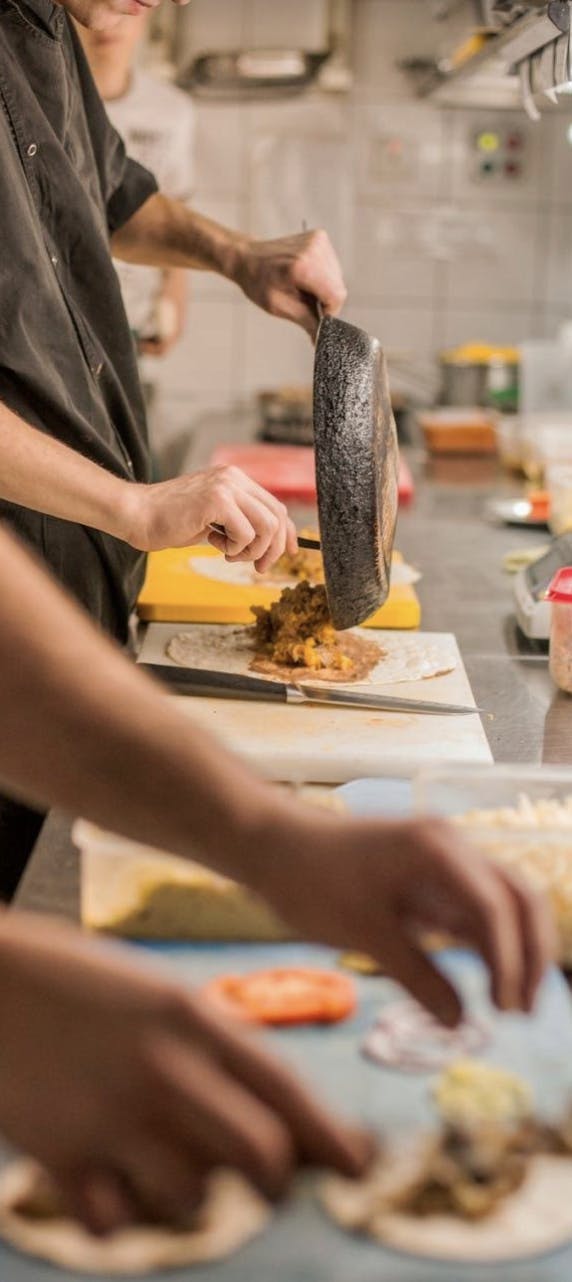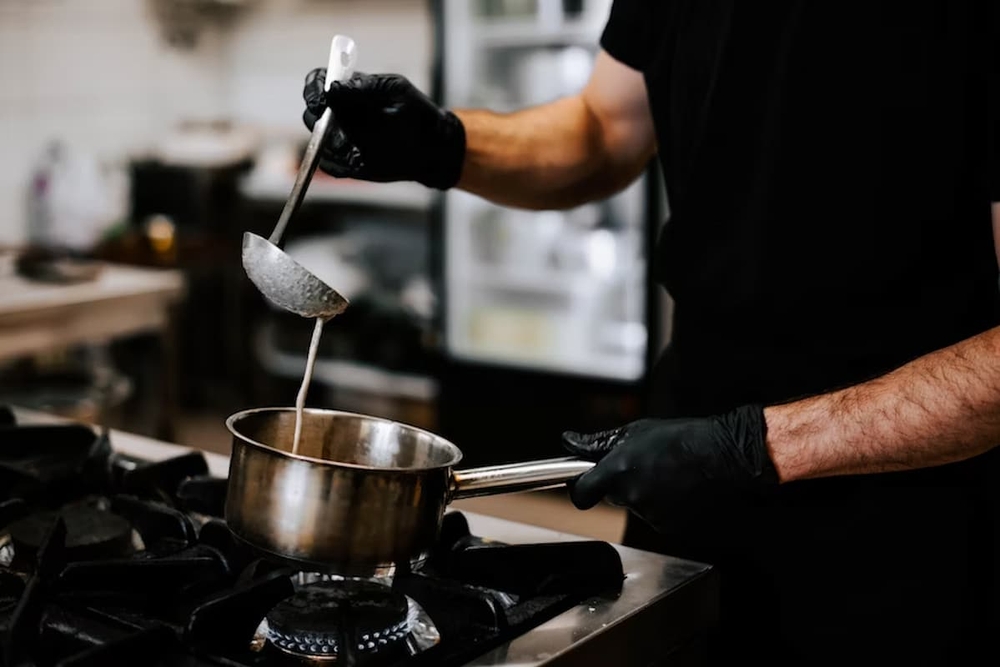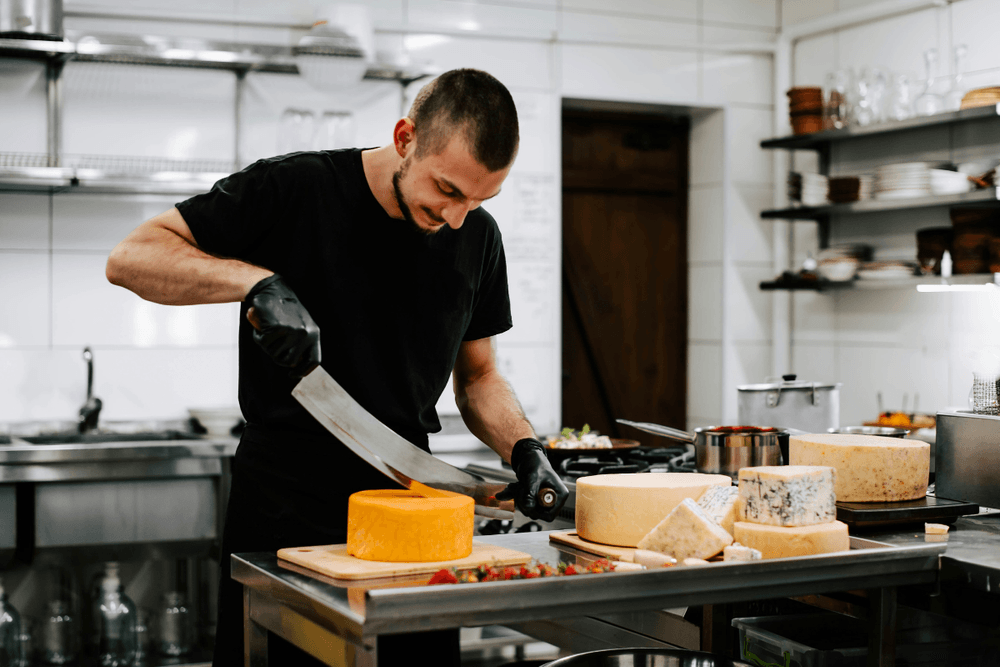Build vs. Rent: How to Decide on a Central Kitchen Facility for Your Food Production Business
Table of Contents
CloudKitchens
How many tacos can be delivered from a 1000sqft restaurant?
The same amount as a 200sqft ghost kitchen.
Weigh the pros and cons of building your own central kitchen versus utilizing a fully equipped, ready-to-go facility to support your growth.
For anyone looking to open a food business, having a fully equipped central kitchen space is essential to efficiently meet local demand. In this process, you need to decide whether to build a structure from scratch or move into one that’s ready to use.
Today, moving into a turnkey kitchen is a more accessible and practical alternative for food business. Besides reducing costs, this model offers a complete space, ready to operate without long construction times and bureaucratic hurdles.
This guide will detail everything you need to know to choose between building or moving into an already-constructed food production kitchen. This way, you can make the best decision to ensure the success and growth of your restaurant.
Read more: What are Ghost Kitchens? The definitive guide to Virtual Restaurants
The Stakes: Why Choosing the Right Central Kitchen Model Matters
Choosing the right model is a strategic decision that directly impacts operational efficiency and service quality. A well-planned kitchen build-out makes the team’s work easier, reduces waste, and ensures the business can meet demand.
When the kitchen is not organized properly, delays and risks arise that compromise the customer experience. These problems can generate extra costs, damage the brand’s reputation, and hinder business expansion.
On the other hand, investing in the right kitchen setup creates a solid foundation for sustainable growth. Some key aspects that should influence your choice include:
- Efficiency: An efficient layout organizes workflow to speed up preparation and order dispatch, reducing delays and improving the customer experience.
- Food Safety: Proper separation of areas prevents cross-contamination and facilitates compliance with health regulations, ensuring safer food and consistent quality.
- Brand Growth: A well-structured kitchen allows you to scale production without losing efficiency or quality, strengthening your company’s reputation and opening doors to new opportunities.
Building Your Own Central Kitchen: What It Really Takes
Building a central kitchen from scratch is a complex project that requires considerable planning and investment. For example, one expert estimated it could cost US $350,000 to build out a 3,000 square foot kitchen in Dallas or Houston.
Moreover, the entire infrastructure project can take up to six months to complete. Beyond the physical space, you need to consider legal, technical, and financial aspects to guarantee safe and efficient operation from day one.
Here are the main challenges and requirements in this process:
- Site Selection: Choose a strategic location that facilitates access to suppliers, transportation, and logistics. You also need to comply with local zoning and environmental regulations.
- Licenses and Permits: Obtain all necessary permissions from regulatory agencies such as the USDA and FDA, which ensure compliance with health and food safety standards.
- Construction Schedule: Plan every step of the work, from remodeling or building to installing ventilation, electrical, and plumbing systems, respecting strict deadlines.
- Equipment Installation: Select and install equipment suitable for the volume and type of production, ensuring efficiency, safety, and ease of maintenance.
- Regulatory Compliance: Keep the kitchen continuously compliant with local, state, and federal regulations, including inspections and required updates.
- Initial Capital: Estimate and secure the financial investment to cover all costs, from construction to equipment, permits, and staff training.
- Unexpected Issues: Be prepared for possible delays in permits, regulatory changes, equipment delivery challenges, and unforeseen extra costs.
Renting or licensing a Ready-to-Go Central Kitchen: What to Expect
Paying to move into a ready-to-use ghost kitchen is a practical and efficient solution for those who want to scale operations quickly, without the challenges of building one. With CloudKitchens, for example, you can begin working with an initial investment of thousands of dollars, instead of hundreds of thousands.
This option offers fast POS system integration, eliminating delays that frequently arise when building from scratch. The space comes fully equipped, with refrigerated and dry storage to keep ingredients safe. In addition, logistical support and a strategic location facilitate order delivery.
- Accelerated launch process to start operations potentially within weeks
- Fully equipped space ready for immediate production
- Refrigerated and dry storage to preserve ingredients
- Efficient logistical support and strategic location
- Lower initial capital required, costing thousands instead of hundreds of thousands of dollars
- Experienced guides to reduce the likelihood of complications with construction, permits, or delays
Compliance and Flexibility Built In
CloudKitchens’ shared kitchen space facilities are designed to operate within the standards required by many regulatory agencies.
The entire infrastructure is prepared to facilitate audits and maintain food safety throughout all production stages. Industrial equipment, ventilation, preparation areas, and storage are installed and organized according to industry best practices.
Besides compliance, the model allows flexibility to scale operations quickly. It’s possible to launch and manage multiple brands in one space, adapt menus, and adjust production volumes according to demand.
Read more: How Much Does It Cost to Start a Restaurant Business?
Avoiding Permitting Pitfalls and Project Delays
By choosing CloudKitchens, entrepreneurs avoid many complex steps relating to licensing, construction, and plan approvals.
Unlike a project built from scratch, which can take six months to a year before opening, this model lets you start activities much sooner – potentially within just a few weeks in some cases. This accelerates return on investment (ROI) and simplifies financial planning.
The absence of construction, suppliers, and structural adjustments eliminates the most common delays in new ventures. This allows operators to focus on running and growing the brand instead of dealing with technical and bureaucratic problems.
Comparing Costs: Build vs. Rent
Choosing whether to build a central kitchen versus rent or license a fully equipped one depends on several strategic factors. Below is a clear comparison of the two models based on the most important aspects for food business operators:
Time to start
Building a kitchen from scratch can take up to six months just for the design and project phase, plus additional time for construction, permits, and equipment installation, which can further extend the timeline. Licensed kitchens like those from CloudKitchens, however, can potentially be ready for operation in just a few weeks.
Initial cost
Construction costs can easily exceed six figures or more, depending on the region and the quality of equipment. With CloudKitchens’ licensing model, you can start with an initial investment as low as $30,000, with infrastructure already in place, reducing the usual commissary kitchen cost significantly.
Labor involved
When building, the entrepreneur must coordinate engineers, suppliers, contractors, and regulatory processes. By moving into a ready-to-go central kitchen, many structural and technical considerations have already been taken care of, allowing the operator to focus fully on running the business.
Risk and return
Construction projects are subject to delays, cost overruns, and operational setbacks. Renting reduces these risks because the construction work is already done and accelerates return on investment, enabling a faster and more predictable path to profitability.
While building may offer some advantages in the long term for highly capitalized brands seeking total control, that is not the case for most restaurant entrepreneurs. For those prioritizing speed, market testing, and scalability, renting a ready-to-use kitchen is the smarter choice.
Read more: Your Guide to Choosing the Best Ghost Kitchen Model
How to Decide What’s Right for Your Food Production Business
The decision between building a kitchen or choosing a kitchen rental for your food business should begin with a clear analysis of your operational needs and growth objectives.
The first point to consider is your budget. Building from scratch demands high upfront investment in construction, permits, and equipment. Ready kitchens allow you to start with more accessible costs and focus on operations from day one.
The timeline also impacts the decision. While building can take many months before opening, commercial kitchens already set up can potentially be ready in weeks, speeding up your market entry.
Regarding growth forecasts, renting or licensing offers immediate scalability, ideal for testing concepts, launching brands, and reaching more areas without locking in fixed capital.
Finally, think about operational demands. Ready kitchens come with integrated infrastructure, technology, and logistical support that simplify daily processes. This allows your team to focus on what really matters: producing quality food and delivering excellent service.
For many food production businesses, renting or licensing a central kitchen is a smart way to grow with agility and less risk. Evaluate your needs and consider a ready-to-use kitchen as a strategic shortcut to scale your operation.
Find a Central Kitchen Location That Fits Your Growth
CloudKitchens has strategically located commercial kitchen facilities across the country to connect your business to high order volumes. With flexible, fully equipped spaces, you can choose the unit that best fits your operation.
Whether launching a new brand or expanding your presence, the infrastructure and support offered facilitate growth and improve efficiency. Explore available locations on the CloudKitchens website or talk to a specialist to find the best option near you.
FAQ – Build vs. Rent Central Kitchen
What are the main advantages of building my own central kitchen?
Building your own facility offers full control over design, equipment, and operations but requires higher upfront investment and longer setup time.
When is renting or licensing a central kitchen a better option?
Renting or licensing is often more flexible and faster to start, ideal for testing concepts or managing seasonal demand without large capital expenditures.
DISCLAIMER: This information is provided for general informational purposes only and the content does not constitute an endorsement. CloudKitchens does not warrant the accuracy or completeness of any information, text, images/graphics, links, or other content contained within the blog content. We recommend that you consult with financial, legal, and business professionals for advice specific to your situation.
More insights & stories
There’s more where that came from.
Get in the know and check out our additional insights





